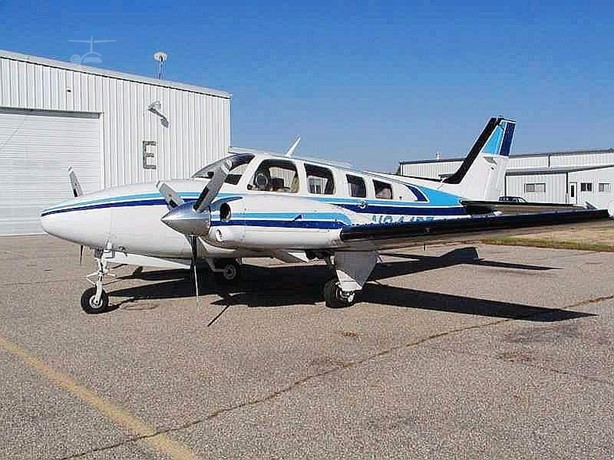Aircraft Information
> Aircraft Make: Beechcraft Model: BE-58 Nickname: Baron
> Aircraft Mil Civ Description: Airplane ME Piston
> FAA Category and Class: Airplane Multi-engine Land
> Engine Description: piston twin
Aircraft Experience
> As of: 11/3/2024
> Number of Hours Flown: 53
> Number of Times Flown: 22
> Other Aircraft Models Associated: BE-58P, other Baron models (including the BE-55)
First Flown Information
> Sequence First Flown: 126
> Date First Flown: 7/16/2002
> Location First Flown: New Century Airport, Olathe, KS (KIXD)
> Who and/or What Organization First Flown With: Bendix King Avionics, Lloyd Bingham
Recollections: My first flight in the Baron was with Lloyd Bingham, a long-time Designated Engineering Representative (DER) Test Pilot with whom–now 22 years later–I’m still working. He’s a true gentleman and role model. Our first flight together was to take a “quick look” at an electronic Horizontal Situation Indicator (HSI), the KMH-825. I feel lucky to have been able to work with “Bendix King” (later bought by Honeywell) and Garmin. Both of these company’s General Aviation effort in the 1990’s and 2000’s was at the Olathe, KS airport. It made for some good competition and being able to work with each of them was interesting.
Not long after my first flight, I also got checked out in a rental Baron and flew it enough to appreciate this solid design that–unlike any other multi-engine piston airplane–is still being manufactuered in the US. This longevity is a testament to the design.

(c) aircraft.com
I got in trouble with the FAA while flying a Baron. I flew a Baron from Wichita to Iowa for a project. Before I tookoff from Wichita, I verified (in an informal “aircraft book” contained in the airplane) that the 100 hour inspection was current (less than 100 hrs). When I arrived in Iowa, I got a call from the man who managed the airplane’s rental (he was not the owner, just an intermediary), who advised me that “the annual is out of date”. The annual date was NOT in the “aircraft book” (though it certainly was in the aircraft’s maintenance logbook which was stored somewhere in somebody’s hangar or office. I was pretty new to the pure civilian world and so I asked him what my options were….he said “no problem, just call the FAA FSDO and get a ferry permit to bring it home, we’ll do the annual when you bring it back.” Cool. So, I called a guy I’d worked a bit with at the Wichita FSDO. Let’s call him “Jack”. I explained the situation to Jack. His response: “Bob, are you self-disclosing a possible violation of the FAR’s to me?” I literally moved the phone receiver away from my face and stared at it in disbelief. “Jack, what’s the right answer to that question?” Jack said I should say Yes…so I did. I finished my business in Iowa, got a rental car and drove to the nearest commercial airport and got on a United flight back to Wichita, leaving the Baron in Iowa. I also filed an ASRS form (this NASA form is somewhat of a “get out of jail free” process that gives you some protection from FAA enforcement). One thing led to another and my “punishment” was a 1 year “double secret probation” with the FAA and remedial training wherein I was to fully research the responsibilities of the Pilot in Command as it related to aircraft airworthiness and to report my research to my Safety Officer in the office where I worked. Well, it turned out that this safety officer (and, in fact, every other Test Pilot in our office) had flown the airplane out of annual as well (it was about a month overdue)…but we never told Jack that. I gladly took the fall. I also learned (it was actually good learning) that, as the PIC, I was the one responsible for compliance to all maintenance standards, which was quite different from my Navy experience where the maintenance folks were responsible. I guess I was supposed to read the logbooks, ensure all AD’s in compliance, annual current, etc. Now, the reality is that MOST pilots of rental airplanes DON’T do this, they depend on the company or FBO renting the airplane to keep up with these requirements and to publish them in an accurate and COMPLETE “aircraft book”. You basically have to trust them. The guy who managed the Baron rental was not trustworthy and the FAA pilots in Wichita never rented from him again.
So, the Baron’s a nice plane and it inadvertently taught me some good lessons about the FAA airworthiness process!
Leave a Reply